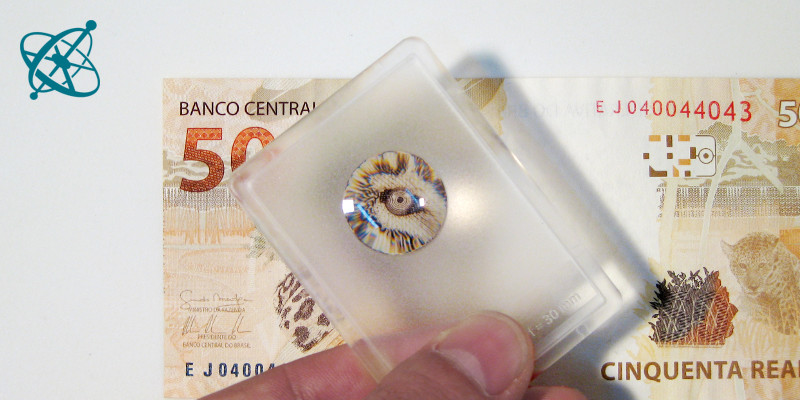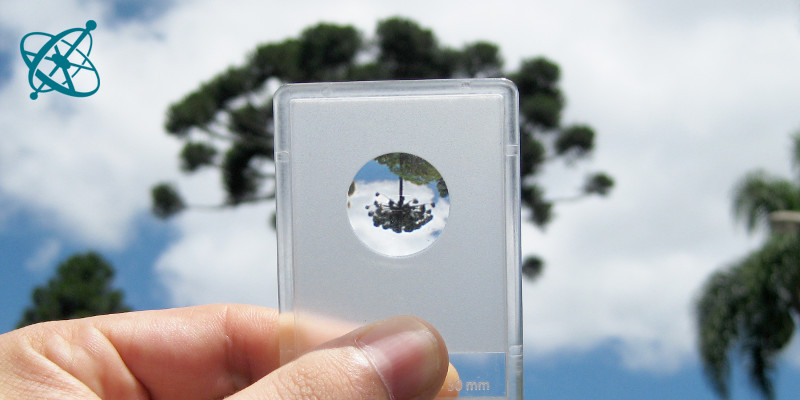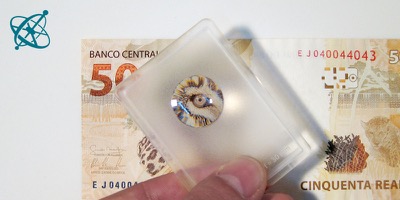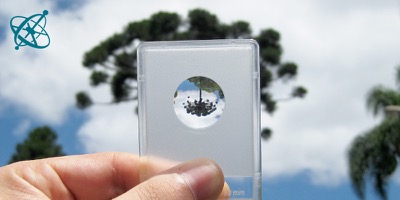 www.sciensation.org | Ciênsação hands-on experiments are published as Open Educational resources under a Creative Commons Attribution-ShareAlike 4.0 International License.
www.sciensation.org | Ciênsação hands-on experiments are published as Open Educational resources under a Creative Commons Attribution-ShareAlike 4.0 International License.
Why does the same lens magnify some objects…

…but makes others appear small and upside down?
Magnifying glass near and far
While a convex lens can be used to see close-up objects magnified, distant objects appear smaller and upside down.
Gaining a feeling for the optical properties of convex lenses.
Observe and distinguish real and virtual images.
1. Why does a magnifying glass only magnify objects close to it?
2. Project an image of the ceiling lamps onto a white paper. Next, try to project the magnified image of a mobile phone display onto paper.
What does a lens do to the light shining through it?
› It changes its direction.
What happens to light coming from a point far from the lens?
› It is focused, meaning concentrated in one point behind the lens.
How is an image formed?
› The light coming from neighboring points of an object is focused in points next to each other. When holding a paper where these points are focused, you can see an image.
Can a lens focus light from an object that is very close to it?
› No. If the object is closer than the focal length, the light remains divergent after the lens.
But why can you see an image of a close object through a magnifying glass?
› The lens in our eye transforms these divergent rays into a real image on the retina. However, for the eye, the light, redirected by the lens, seems to come from a larger object behind the actual object – which is called a virtual image.
Students will note that nearby objects can be seen magnified, while distant objects are seen demagnified and upside-down. While it is easy to project the real image of distant objects like ceiling lamps, it is impossible to project the virtual image onto a screen without using a second lens.
In this experiment, the human eye provides this second lens and thus allows to see the virtual image as real image on the retina. Moreover, the human eye has the ability to accommodate, i.e. to adapt its focal length. For this reason, an observer will not see a sudden switching from a virtual to a real image when moving an object around the focal point of the lens. It is even possible to see magnified upside-down images without a screen, when the eye focuses on the real image of objects that are a bit less than two focal lengths before the lens.
Some time later, you could pick up the threads by asking how two lenses can be used to magnify distant objects in telescopes or photograph tiny objects with a microscope.

